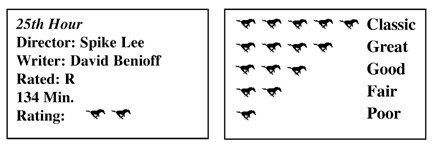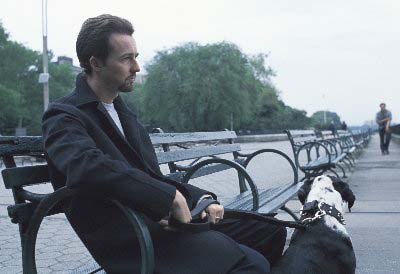
Lee’s latest runs long
From the beginning of “25th Hour,” it was abundantly clear that Spike Lee was on a mission to shape our collective opinion about Montgomery Brogan.
Edward Norton plays Brogan. In the first scene of the movie, Brogan and his numbskull crony find a dog left for dead after an apparent dog fight. Although battered and bloody, the dog still has bite and the desire to live.
The film focuses on the last day Brogan will spend as a free man before spending his next seven years behind bars. Surrounded by his loved ones, Brogan wrestles with the movie’s tagline, “Can you change your life in one day?”
The movie’s main plot blurs intermittently with sub-plots – some providing comic relief and others centered around politically fueled rants.
One particular rant attempted to insult every demographic in New York City.
The scene depicts Norton looking into a mirror rambling off stereotypical portrayals of every one from the taxi drivers and the fruit market owners.
It might as well have been Lee’s reflection in the mirror making the statements. The issues presented here are not really hit upon during the rest of the film and they just seemed out of place, as if Lee had finally found a creative way to get some things off of his chest rather than Brogan’s.
There were plenty of art house cinema techniques perpetrated throughout the film, from long drawn out shots of feet walking along a pier to events being shown from multiple angles.
Lee’s intention was to capture the scratchy imperfections of the world and, in particular, Brogan’s world.
The movie’s original music, by Terence Blanchard, perfectly complemented the cinematography.
The moody piano tracks and rhythmic choral melodies evoked more emotions than some of the actors’ dialogue.
One of the most visually interesting scenes involves Norton’s two oldest buddies arguing on the window-ledge seat of Frank Slaughtery’s luxury apartment.
The view first looks like an old rail track system, aged with dirt and destruction, but when it comes into focus, the audience realizes that it’s Ground Zero – the former site of the Twin Towers.
This symbolism is inappropriate as well as insensitive.
Lee paints the picture of a man who may not be surrounded by love but at least knows what it feels like to be cared for.
The director paints a very human picture of Brogan and wants us to question our belief systems. Should we feel bad for Brogan or do we think that justice is being served?
The movie was meaningful, and regardless of Lee’s original intent – what he wanted audience members to take away from the movie – everyone should leave the movie discussing the ending, as it is left somewhat in the air.

Lee’s latest runs long









